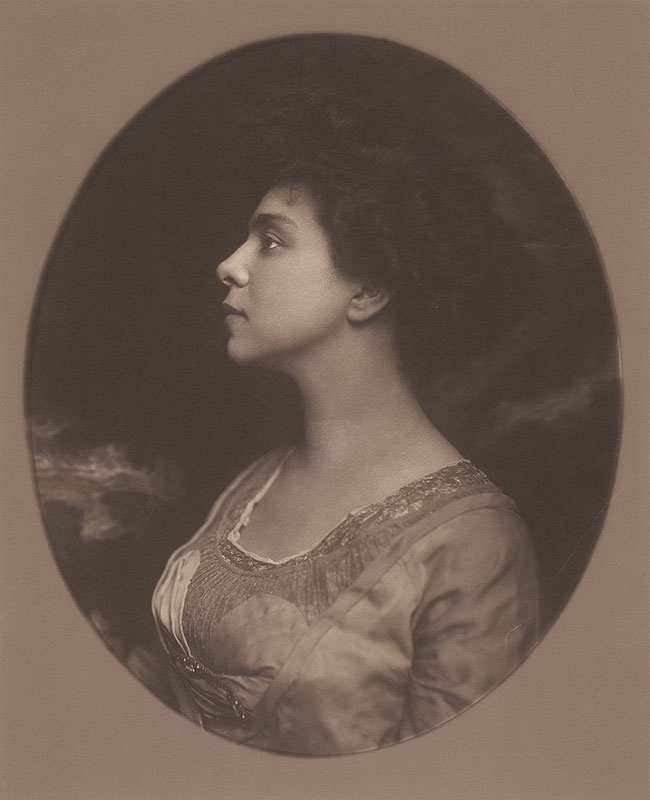Listen to co-curator Erica Ciallela interpret this portrait of Belle Greene and actor Andi Bohs read a passage from one of Greene’s letters.

AN EARLY PORTRAIT OF BELLE GREENE
This image made by the British-born American photographer Ernest Walter Histed is the earliest known solo portrait of Belle da Costa Greene. At this time Histed operated a studio on Fifth Avenue in New York City, though the circumstances under which he photographed Greene are unknown. Greene may have been referring to this image when she wrote in a 1910 of a “real” photograph of herself. While early images of Greene would share visual affinities with many of the light-skinned women depicted on the cover of The Crisis, as with the image of Georgia Douglas Johnson nearby, Greene’s portraiture as a white-passing woman would take a divergent path.
Ernest Walter Histed (1862–1947)
Belle da Costa Greene, 1910
Gelatin silver print
The Morgan Library & Museum; ARC 2702
ERICA: People often find this photograph of Belle Greene to be more “authentic,” in that she is not wearing a hat, her hair is visible, and her skin is not brightened by tricks of lighting and pose. She is often described as more natural in this portrait. Greene may have been describing this image when she wrote the following lines to the art historian Bernard Berenson, her most famous lover and recipient of many of her photographs:
ANDI: I am sending you a “real” photograph such as you demand today – It may look rather sad for the simple reason that I was thinking of you all the time it was being taken (honestly) & that always makes me sad”
ERICA: Belle Greene became a newspaper celebrity in the early 1910s, appearing in articles about her, Morgan, and the Library. Though these pieces discussed her work as a librarian and curator, they typically began with patronizing comments on her skin tone, physical appearance, age, and beauty. Given how she was portrayed in the mass media, it is no surprise that Belle Greene rarely gave interviews and virtually disappeared from newspaper coverage after 1915.
